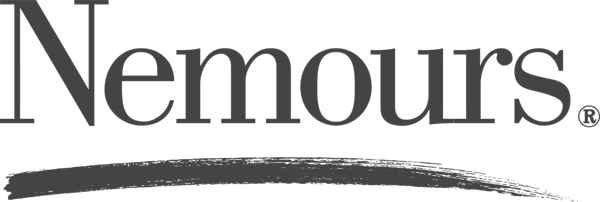Most people don’t realize just how many things can quietly go wrong during a video production project. It’s not always one big mistake. Sometimes it’s a slow leak of little things—a missed email here, an unclear script line there, someone assuming someone else was in charge of something. Before you know it, deadlines slip and budgets stretch. Worse, the final video just doesn’t land. It doesn’t connect. Not quite. This is exactly why a clear, well-thought-out video production workflow step-by-step guide isn’t just helpful—it’s essential. Especially for marketing teams, small businesses, and agencies trying to stand out in Jacksonville’s crowded content space. At C7 Creative, we’ve been through enough shoots and edits to spot the usual traps. So consider this not just a how-to, but more of a heads-up.
Let’s walk through the key workflow stages in a real-world way. Not too polished. Just the stuff that matters, laid out honestly.
Video Production Workflow Step-by-Step Guide
1. Start with the “Why”: Strategy Before Scripts
Before lights, before cameras, before anyone even touches camera equipment, you need to pause. Ask yourself: Why are we even making this video? It sounds simple. But skipping this leads to content that feels aimless or tries to be too many things at once.
- Who’s the audience?
- What are you asking them to do? Click? Buy? Subscribe?
- Where will this video live—landing pages, Instagram Reels, maybe an OTT platform?
This is part of the pre-production phase, and it’s where a lot of people try to rush through. They’ve got a product to promote or a message to share, and they just want to start filming. But slow down. Solid video marketing starts with clarity. And clarity starts with strategy.
2. Script Like a Storyteller, Not a Salesperson
Here’s where most marketing videos go sideways. The script. Too often, it ends up reading like a flyer rather than a story. Lists of features. Corporate jargon. Buzzwords.
Instead, think visual. How does this unfold on screen? Is there movement? Dialogue? Emotional tension? Even short pieces—micro videos, panel interviews, explainer clips—need a narrative shape.
A solid script should:
- Map to your message
- Match your visual ideas
- Feel conversational (even if it’s narrated by an AI avatar or delivered over remote editing)
Pro tip: Write it, read it out loud, and then trim about 20%.
3. Plan Like a Producer
This is the messy but critical part: scheduling, logistics, shot listing, location scouting, gear checks, call sheets. Some folks call it boring. We call it the backbone.
During pre-production, every decision you make here saves hours (and dollars) later. Let’s say your team forgot to bring extra batteries or didn’t check sound levels ahead of time. Or missed a critical angle because no one built a shot list.
This is where our Jacksonville video production team lives. We handle the small details so our clients can focus on the big picture. But if you’re DIYing it, at least slow down enough to build a solid media board. Plan out:
- Gear setup
- Lighting
- Sound recording logistics
- Backup power
- Permissions for locations
Also: Weather. Always check the weather.
4. The Production Phase: Where Little Things Turn Big
Alright. Lights on. Mics hot. Everyone’s on set. Now’s when all that prep gets tested.
If you’re working with a Jacksonville video production company (like ours), we usually have a dedicated director and camera operators managing the flow. But even in smaller shoots, someone needs to be steering.
Here’s where people trip:
- No clear director on set
- Lighting changes mid-shoot
- Someone forgot to silence phones
- Files don’t save properly (always use local recording with backup)
Also, consider real-time review. If you can, play back some takes on set. Catching mistakes here is so much easier than fixing them later in post.
5. Post-Production Phase: Not Just Cutting Footage
Now we get into video editing, which sounds like sitting at a desk and trimming clips. But there’s way more to it. It’s a story structure. Timing. Emotion. Music. Visual FX. And it’s where rushed projects really start to show.
If you’re editing yourself, build in more time than you think you need. Editing takes longer than most people expect. And if you’re using an AI Editor or shared collaborative workflows, make sure you’re syncing things properly.
A typical Jacksonville video production editing process might include:
- Organizing media files in a DAM system (digital asset management)
- Backups (seriously, again: backups)
- Choosing music that doesn’t violate copyright
- Layering B-roll
- Color correction and color grading
- Clean sound design
- Exporting for web, mobile, and adaptive bitrate streaming
Avoid version confusion with a clear file naming convention. No more “Final_FINAL_v4_ACTUALFINAL.mov” nonsense.
6. Review and Revisions: Controlled Chaos
Once a draft is ready, everyone wants changes. That’s fine. But chaos starts when there’s no system.
We recommend limiting rounds. Maybe two or three at most. Use time stamped feedback. Avoid vague comments like “make it pop.”
And when working remotely? Tools like collaborative shared workspaces and cloud video workflows help, especially if you’re working with external teams or a Jacksonville video production company handling post.
Also, designate one decision-maker. Too many cooks… you know.
7. Delivery & Optimization: Don’t Drop the Ball Here
You’ve got a finished video. You upload it to YouTube. Done, right? Not quite.
Before final delivery, double-check the formatting. Export in the right resolution. Use proper codecs. Compress files without losing quality. Consider video transcoding for platforms like Vimeo, social media, or your own website.
Then there’s SEO:
- Keyword-rich titles
- Descriptions that drive clicks
- Captions for accessibility and engagement
If you’re using the video in multiple places (like landing pages, social media, or an OTT platform), make sure it’s sized appropriately. And archive the high-res version somewhere safe. File security and smart digital asset management matter more than most folks expect.
8. Bonus Round: Extra Pitfalls to Dodge
Here are some quick, real-world things we’ve seen (or fixed for clients):
- No release forms signed before filming
- Losing all assets to a Cloudflare Error or a misconfigured server (yes, really)
- Accidentally filming in vertical when you need horizontal
- Forgetting to plan for closed captions
- Ignoring color consistency across brand assets
The point isn’t to scare you. It’s just that when you know what to look for, you avoid trouble. Or at least fix it faster.
Final Words
There’s nothing wrong with handling your own video production workflow. Plenty of teams do a great job. But if your plate is already full or you just don’t want the hassle of managing a full shoot and post-processing, we get it.
That’s where we come in. As a seasoned Jacksonville video production company, C7 Creative helps clients avoid these common pitfalls from day one. Our video production workflow step-by-step guide walks you through everything—from strategy and scripting to editing, delivery, and all the curveballs in between.
Contact us today if you want a smoother, smarter, more stress-free path to high-quality video. Whether it’s for a campaign, a product launch, or just getting more traction online, we can help you make it work.
Calvin Bryant
Calvin is a digital expert with clients in the U.S., U.K., and the Caribbean Islands. As the founder of C7, he has worked with Joel Osteen, Carlos Santana, the FBI, and the NBA. He resides in Ponte Vedra, Florida, and is a proud father and husband of 28+ years to his wife, Krista.








